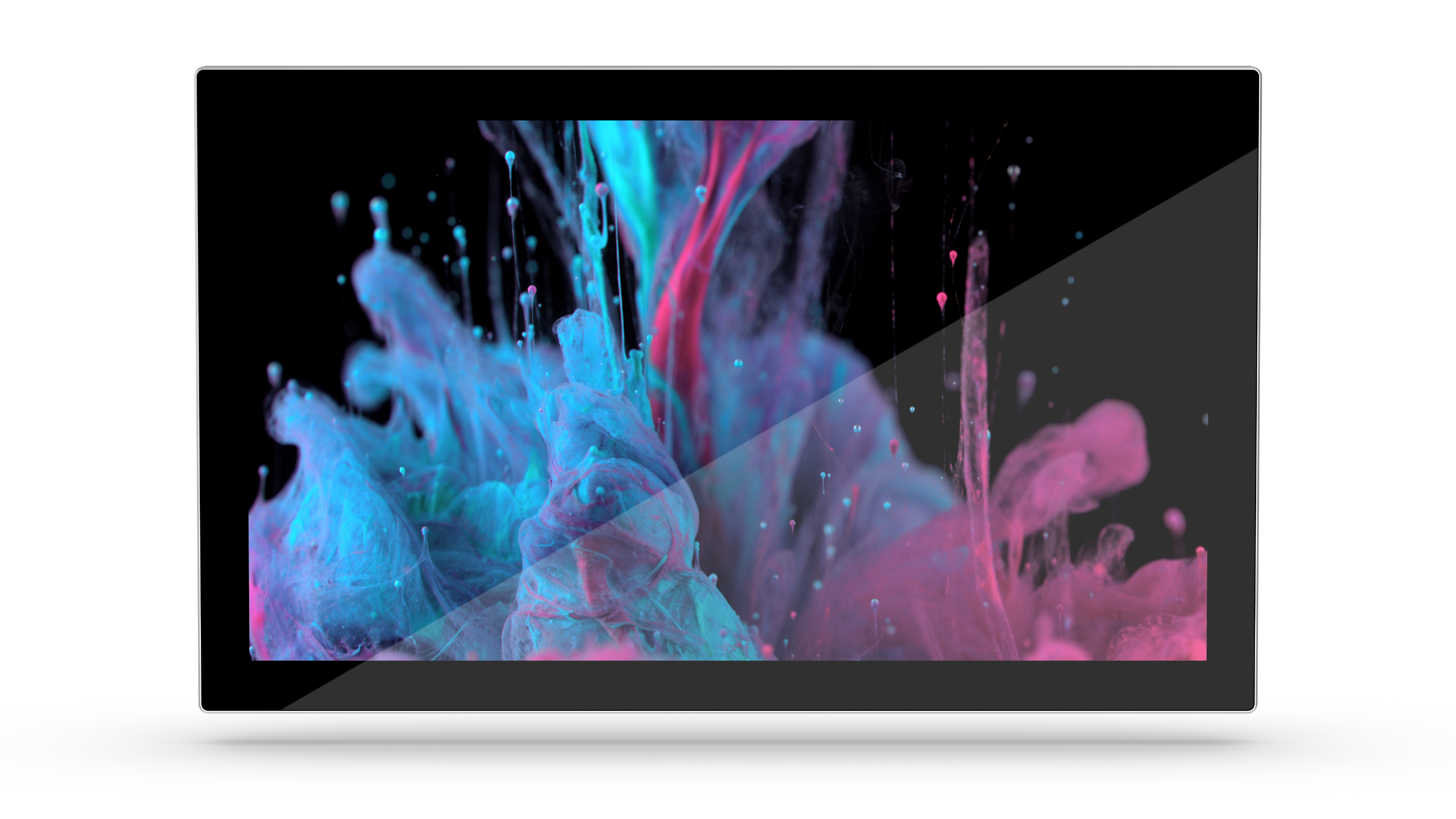PCAP user-friendly and robust
Since their debut in the Apple iPhone, PCAP touchscreens have become widely recognized for their user-friendly and durable design. This technology supports the detection of multiple contact points simultaneously, enabling multi-touch functionality. It’s increasingly adopted across various industries, especially in consumer applications, because it requires no force and responds to bare fingers. PCAP touchscreens are commonly used in smartphones, tablets, PDAs, portable media players, game consoles, and even in the catering industry for cash register operations. Below, we’ve outlined some advantages and disadvantages of PCAP touchscreens.
The Versatility of PCAP Touch Screens: Balancing Pros and Cons
PCAP Touch Screens respond to the slightest touch, understanding even the most complex gestures with precision. Capacitive Touch technology has revolutionized the way we interact with devices. For product developers, especially those in professional industrial applications, choosing the right touch screen technology is crucial. The right choice can enhance user experience, streamline operations, and even reduce costs.
Interelectronix, with years of experience in the touch screen industry, understands these needs intimately and offers a comprehensive look into the advantages and disadvantages of PCAP touch screens.
Understanding PCAP Technology
PCAP touch screens have become the go-to technology for many modern devices. This technology works by creating an electrostatic field across the screen, which gets disrupted when touched. The device then detects these changes and translates them into commands. The sensitivity and accuracy of PCAP touch screens make them ideal for applications requiring precise touch recognition, from smartphones to industrial control panels. They support multi-touch gestures, such as pinch-to-zoom, which enhances the user interface significantly.
Advantages of PCAP Touch Screens
PCAP touch screens offer several compelling benefits. Firstly, their high durability is a key advantage. The technology allows for a glass cover lens, providing excellent protection against scratches and impacts. This durability makes PCAP touch screens suitable for harsh environments, including outdoor kiosks and industrial machinery. Additionally, these screens are highly responsive, detecting even the lightest touch. This responsiveness is essential for applications where speed and accuracy are critical, such as in medical devices or point-of-sale systems.
Another significant advantage is the superior image clarity that PCAP screens provide. Unlike resistive touch screens, which can sometimes blur or distort the display, PCAP screens maintain the screen's clarity and brightness. This feature is particularly important in industries where display quality cannot be compromised, such as automotive or aerospace. Furthermore, PCAP technology supports multi-touch gestures, allowing for a more interactive and intuitive user experience. This capability is increasingly important in applications ranging from gaming to professional workstations, where users benefit from the ability to use multiple fingers simultaneously.
Challenges and Limitations
While PCAP touch screens offer numerous benefits, they also come with certain limitations. One of the primary challenges is their sensitivity to electrical noise, which can interfere with touch detection. This issue is particularly problematic in industrial settings where electromagnetic interference is common. Additionally, PCAP screens are less effective when used with gloves or when the screen is wet, which can be a limitation in environments such as healthcare or outdoor use. While there are solutions like glove-compatible sensors and water-rejection algorithms, these can add to the overall cost.
Cost is another consideration. PCAP touch screens tend to be more expensive than other types of touch screens, such as resistive or infrared. This higher cost can be a barrier for projects with tight budgets. Moreover, the integration of PCAP technology requires careful design considerations, particularly regarding the materials used for the cover lens and the sensitivity settings. These factors can add complexity to the design and manufacturing process, potentially leading to higher development costs.
Industry-Specific Applications
The decision to use PCAP touch screens often depends on the specific needs of the industry. In consumer electronics, the high responsiveness and multi-touch capabilities make PCAP screens a preferred choice for smartphones and tablets. In the automotive industry, the clarity and durability of these screens are invaluable for infotainment systems and navigation displays. For industrial applications, the robustness of PCAP screens makes them suitable for use in control panels and machinery interfaces, although the potential for interference must be carefully managed.
In healthcare, PCAP touch screens offer the advantage of being easy to clean and disinfect, which is crucial in medical environments. However, the limitation in use with gloves must be addressed, often by integrating specialized sensors. Outdoor applications, such as ATMs or public kiosks, benefit from the durability and clarity of PCAP screens, but designers must account for potential issues with rain or other environmental factors.
PCAP Technology Outlook
The future of PCAP touch screens looks promising, with ongoing advancements aimed at overcoming current limitations. Research and development are focused on enhancing sensitivity to work better with gloves and in wet conditions, which could expand the applicability of PCAP screens in more challenging environments. Innovations in materials and manufacturing processes are also driving down costs, making this technology more accessible for a broader range of applications.
As the demand for more intuitive and responsive touch interfaces grows, particularly with the rise of the Internet of Things (IoT) and smart devices, PCAP technology is set to play an increasingly significant role. The ability to provide a seamless and engaging user experience will continue to drive innovation and adoption in various industries, from consumer electronics to industrial automation.


Choosing the right touch screen technology is a critical decision that can significantly impact your product's success. Interelectronix, with its deep expertise in PCAP touch screens and a commitment to quality, is well-positioned to guide you through this process. Our team understands the nuances of different industries and can provide tailored solutions that meet your specific needs. Whether you're looking for high durability, superior image clarity, or advanced multi-touch capabilities, we have the experience and knowledge to help you make an informed decision.